A Week in the Bush Vol. 546
on Apr 30, 2025Upon hearing that a pair of wild dogs had been located, we quickly made our way into the area. The pair were in pursuit of impala, a scenario that promised a fast-paced and unpredictable encounter. Suddenly, as we rounded a bend, a young impala ram burst into view, sprinting straight toward us. Hot on its heels was the male wild dog, locked in pursuit, both animals thundering past us in a blur of motion and adrenaline. We circled around to catch up, and upon our arrival, we found the male wild dog standing over the impala - he had made the kill. Wasting no time, he began gutting the carcass, tearing into the more accessible parts as he ate. Yet even during feeding, his attention kept flicking upward, scanning the surrounding bush for his partner. Eventually, her shape emerged in the distance, trotting purposefully down the road toward us. Reunited, the pair began to feed in earnest, tugging at the carcass and gorging themselves to their hearts’ content.
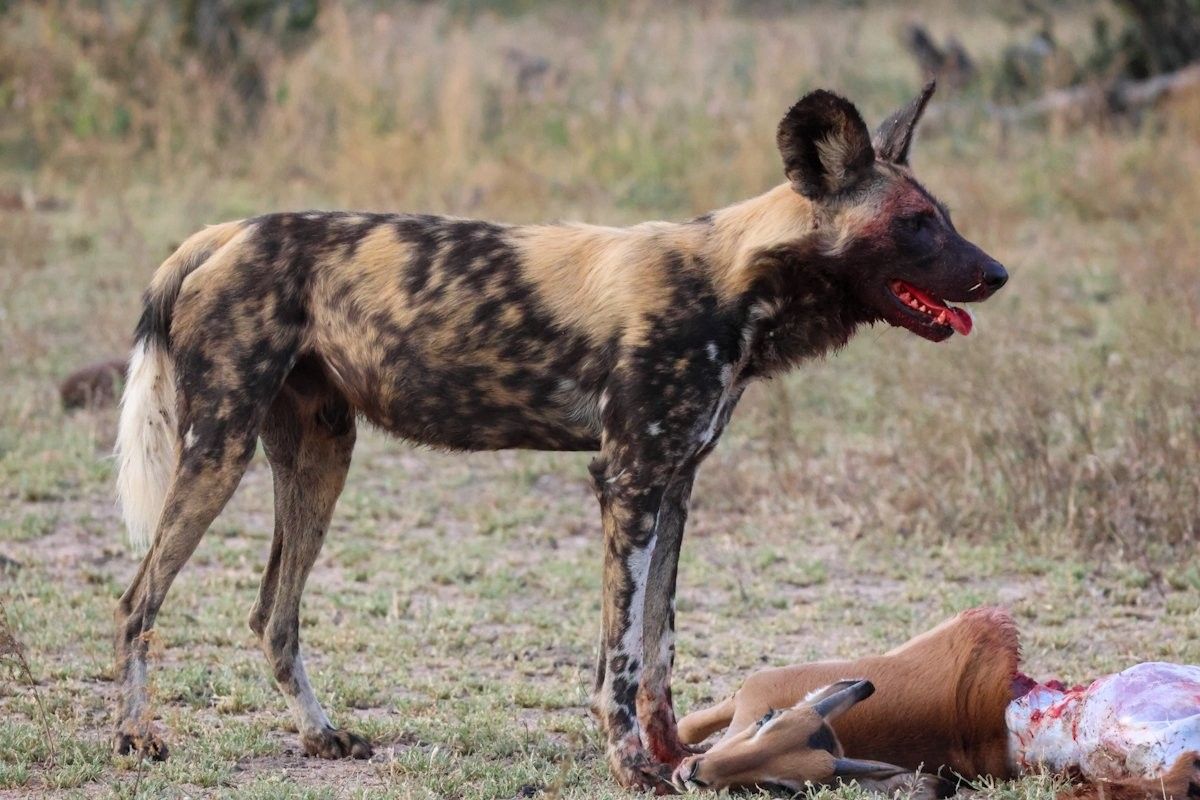


Golonyi has been incredibly successful in providing for her ever-growing cub. In recent days, she brought down an impala ram and stayed in the area, allowing them both to feed and finish the meal before moving off to quench their thirst. Just a few days later, she took down a duiker. Still full from the impala, they weren't particularly hungry, but the young cub made the most of the opportunity, feeding eagerly while his mother showed little interest in the fresh kill.
Although he still suckles from her, the male cub’s developing teeth are giving him a growing appetite for meat. He seizes every chance to feed, steadily building his strength as he prepares for the next stage of his life.
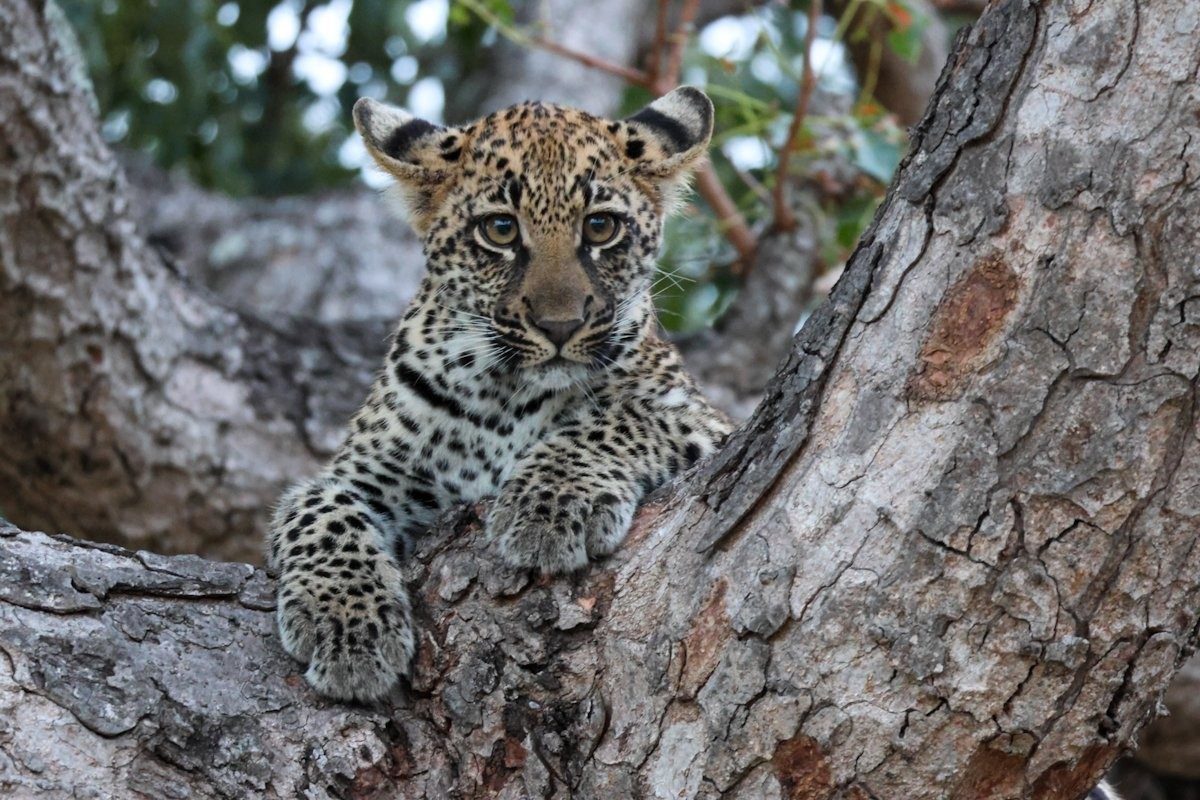


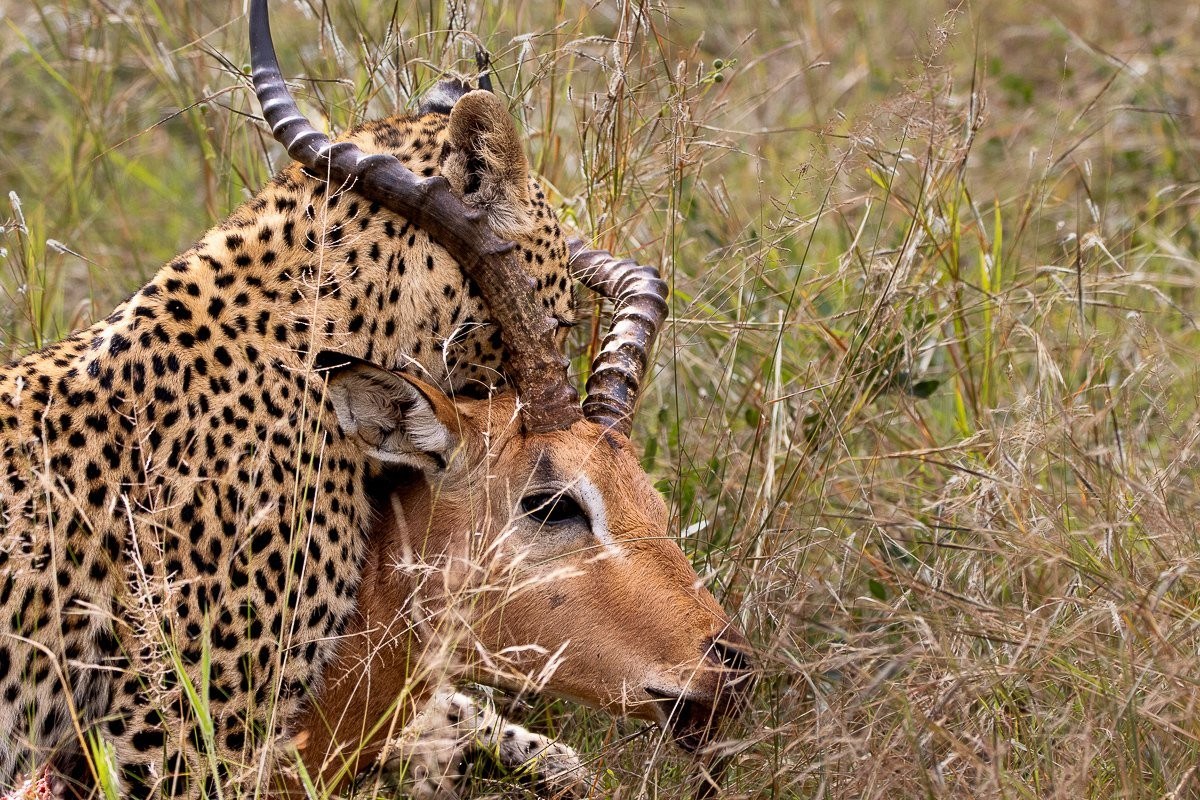


Returning to Golonyi and her cub, we were treated to yet another delightful sighting of the energetic young male, full of playful antics. As we observed them, it became clear that Golonyi’s attention was fixed on the nearby drainage line, where her kill was stashed. A closer look revealed why - Khulwana, the dominant male, had discovered the kill and was helping himself to the spoils of Golonyi’s hard-earned effort.
Golonyi and her cub kept their distance, likely to ensure the young one’s safety. It’s not uncommon for leopards to steal kills from each other - especially when a male encounters a female with a kill. In such cases, the male typically takes over, forcing the female to retreat and hunt again.
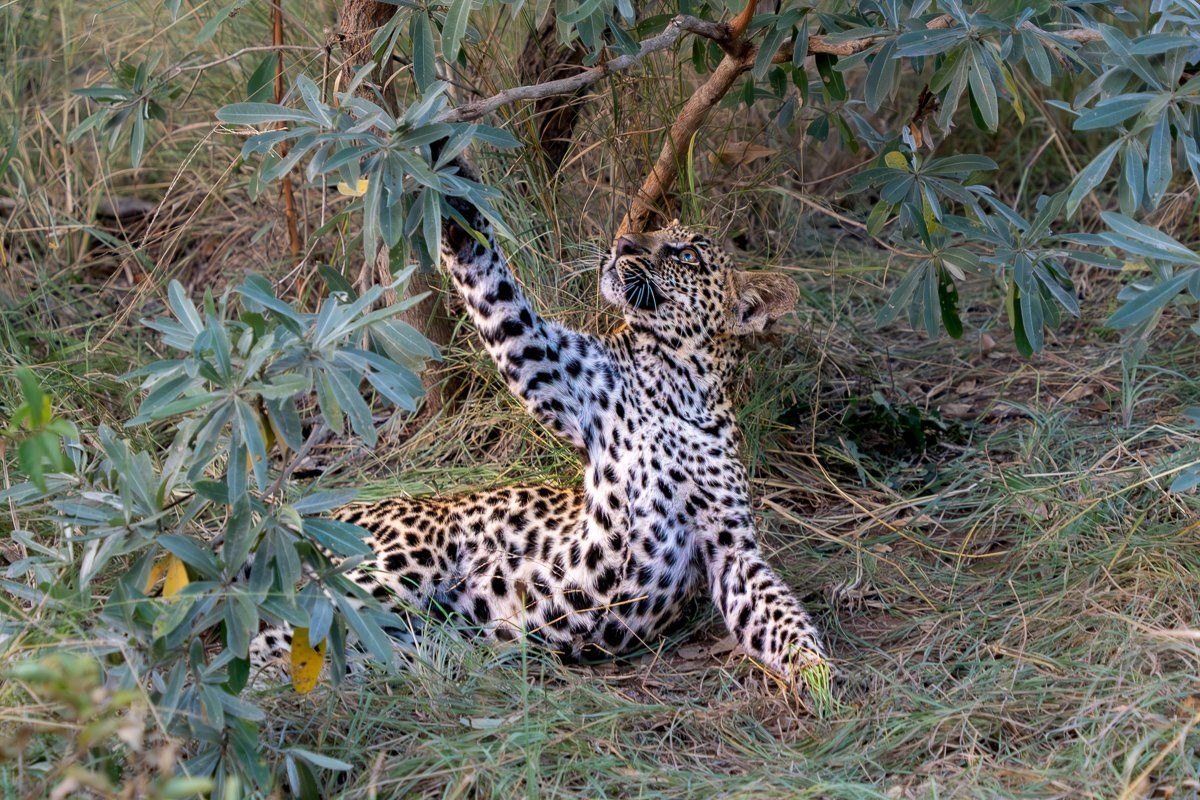




We decided to follow up on Golonyi and her cub after the male leopard had moved off, leaving nothing behind from the impala carcass. As we approached, we spotted Golonyi hidden in the tall grass, intently focused on something ahead. Careful not to disturb her, we positioned ourselves to have no influence on her hunt. It soon became clear she was stalking a scrub hare. In a sudden burst of energy, Golonyi pounced — but the hare narrowly escaped. Undeterred, she made her way back to the drainage line, where she reunited with her cub and settled into a comfortable spot to rest for the day. After sunset, Golonyi is likely to lead her cub away from the area to avoid the hyena activity gathering around the remains of the impala carcass.
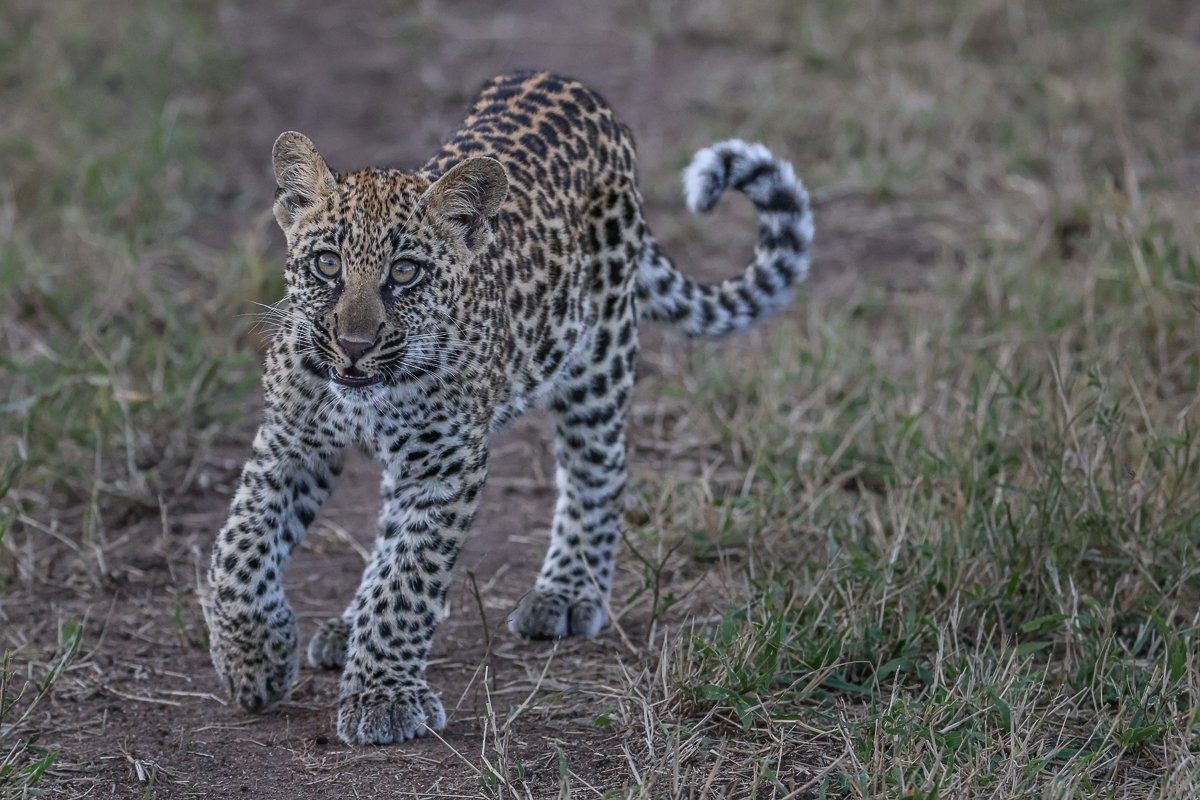


We came across the two Gijima males resting in a small open area near a waterhole, fast asleep under the morning sun. Both lions were in excellent condition and looked set to spend the day in the area before likely moving off again after nightfall. They must have reunited during the night, as we had seen the larger male alone the day before, calling out to find his partner.
It’s not uncommon for these males to separate temporarily—each checking in on different prides or patrolling separate parts of their territory. But if they encounter trouble, they quickly begin roaring and contact calling, a powerful way to reunite and face any threat together.



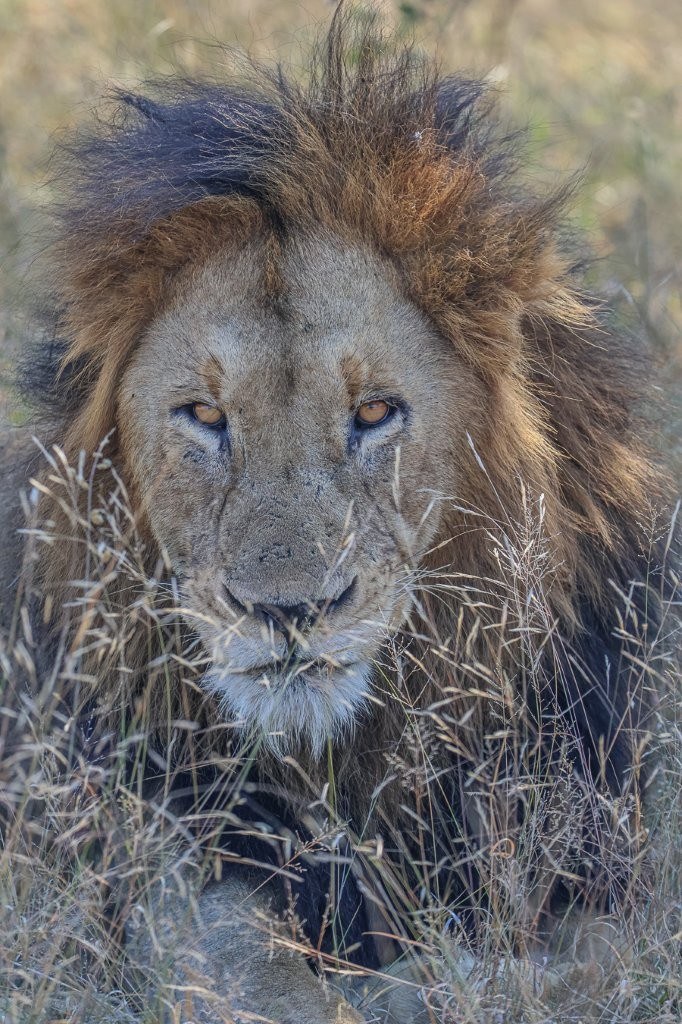


After leaving Earth Lodge just as the sun began to rise over the horizon, we picked up fresh lion tracks heading deeper into the reserve. We followed the trail, surprised by how far the lions had travelled overnight. After an engaging tracking effort, we eventually found the Southern Pride feeding on the remains of a young impala ram they had successfully taken down. With the carcass already picked clean, the pride began making their way toward a nearby waterhole.
We waited patiently as they approached, watching them line up perfectly side by side as they quenched their thirst. Once satisfied, they disappeared into the thickets where they found a shady, comfortable spot to rest for the day—conserving their energy in preparation for whatever the night might bring.
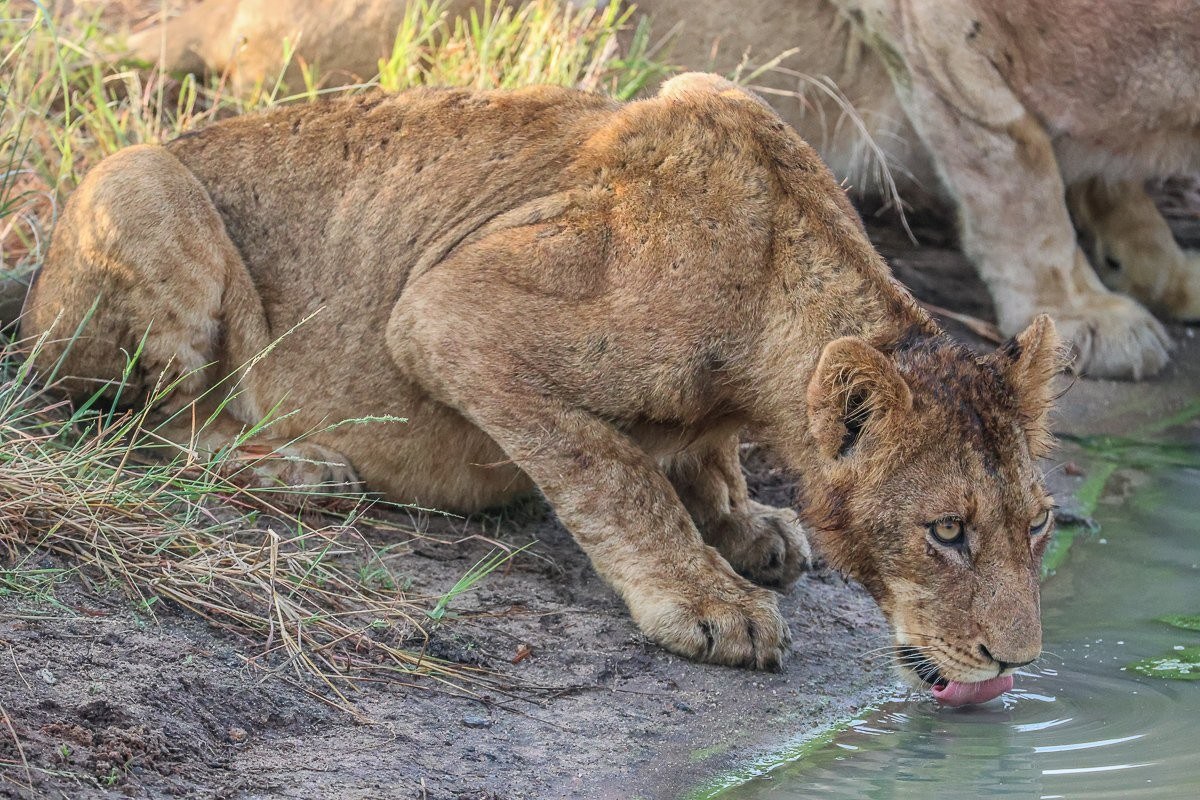


Following up on the Southern Pride, we were surprised by how far they had moved since the morning. With cooler daytime temperatures, the conditions were ideal for the lions to stay on the move even during the day. After nearly two hours of tracking, we finally caught a break - vultures began to gather, and a group of hyenas lay on an open patch, intently watching the treeline. As we moved closer, the sound of growling reached us, and we discovered the Southern Pride on a fresh zebra kill.
It’s been an incredibly successful day for this pride. Not only did they take down a zebra, but earlier they had also managed to kill an impala - two kills in one day, with a considerable distance between them.
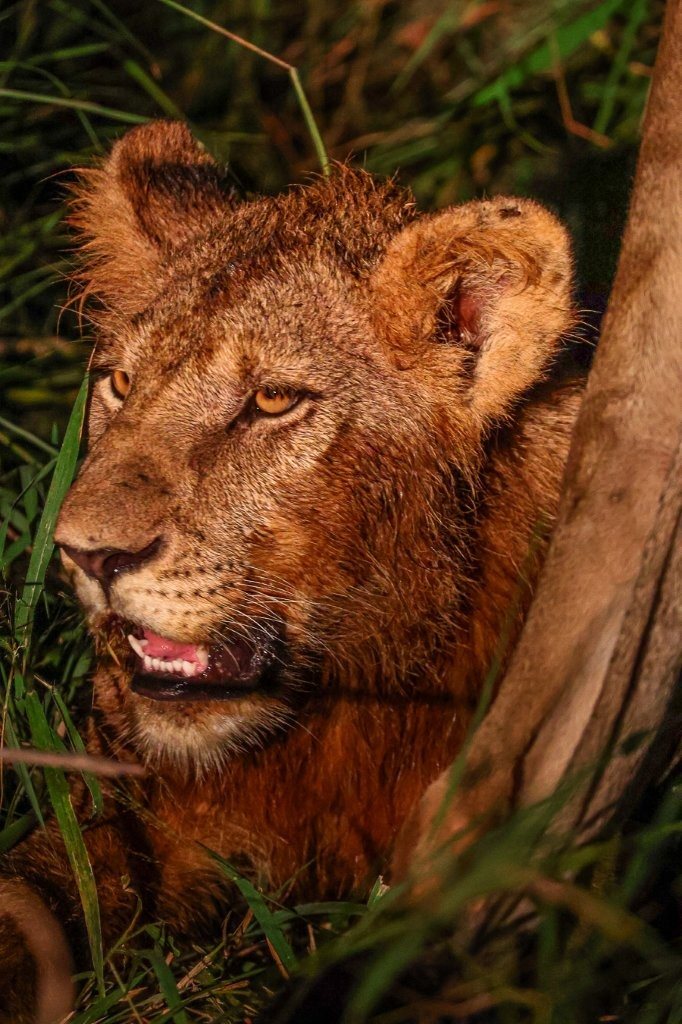
The Msuthlu Pride was resting in an open clearing; their bellies full after bringing down a young zebra foal. The pride was completely at ease - lounging in the warm sun, grooming one another, and the cubs playfully tumbling about. It’s always a privilege to witness these moments of contentment after a successful hunt.
Watching the cubs grow, play, and interact offers a glimpse into their development as they gradually mature into strong, independent lions. Each playful pounce and wrestle is practice for the skills they’ll need as adults - honing their instincts under the watchful eyes of the adults.


We followed the tracks of the Msuthlu Pride, which led deeper into the western part of our reserve. After some time, we found them resting near a small waterhole, basking in the warmth as they waited for the sun to break through the clouds. The lions appeared to be in excellent condition, clearly well-fed from a recent meal. With the temperatures set to rise throughout the day, they will remain in the area, conserving energy until nightfall, when they will move on in search of their next hunt.


As this young zebra foal explored the wide-open plain, he busily tested the balance and limits of his little body. Unaware of the small commotion he was causing, a towering impala ram stood nearby, watchfully scanning the area to ensure nothing else was amiss - his focus fixed on keeping his female herd safe from any potential danger.


While driving through a very thick area with many large trees we spotted this beautiful Verreaux’s eagle-owl perched in a Jackalberry tree. These impressive birds typically spend their days tucked away in thick, leafy canopies where they can rest undisturbed. As night falls, they move to more open perches, perfectly positioned to begin their nocturnal hunt.
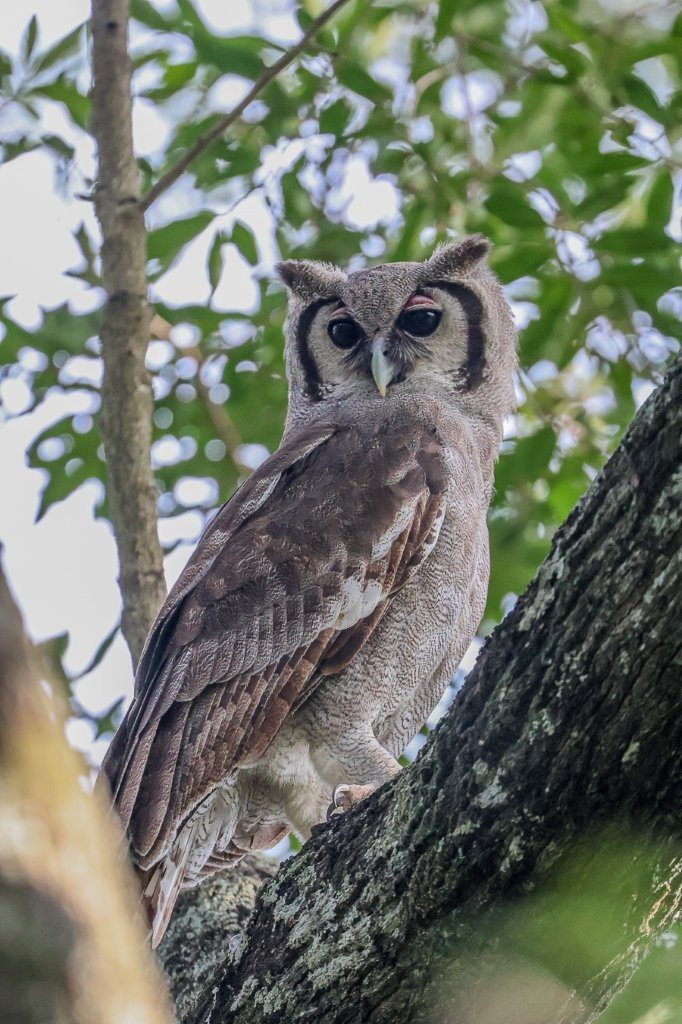
It's always fascinating to watch how different animals interact. In this case, we saw a giraffe and an ostrich crossing paths in an open clearing. They showed a bit of curiosity toward each other before the giraffe continued its way and the ostrich wandered over to a nearby watering hole for a drink.


The largest snake species in South Africa, this African Rock Python was slowly making its way across the road after some rain. This individual was around 1.5 metres long and didn’t seem bothered by our presence, calmly letting us watch before it quietly slithered off into the nearby bush.
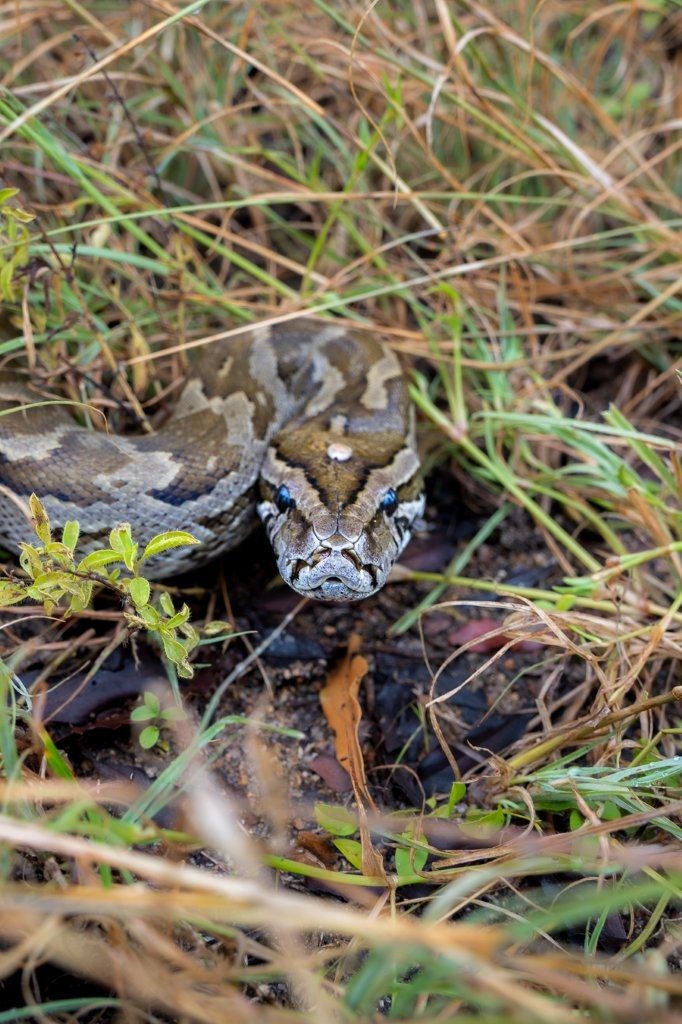
The Garden orb-web spider is a fascinating species, often found spinning its web in gardens or dense bushes. Their intricate webs are typically positioned low to the ground, with the spider resting in the centre, head facing downward, patiently awaiting the slightest disturbance that might signal a trapped insect. This female was doing just that—still and alert, waiting for her next meal. In contrast, the males are significantly smaller and far less striking in appearance, often going unnoticed compared to their larger, more vibrant female counterparts.
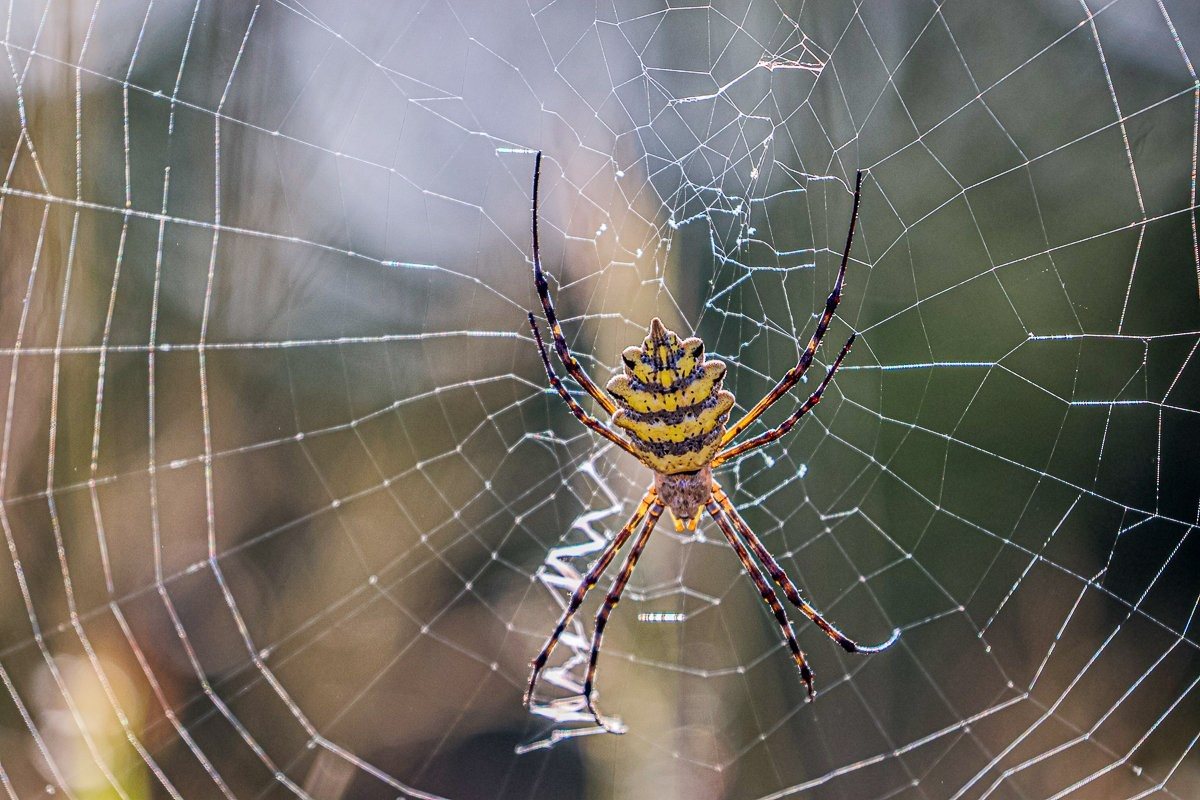
We visited a hyena den and were treated to the sight of all three cubs out and about. It was early morning, and the adult hyenas had only recently returned from their evening activities, which allowed the cubs to emerge from their burrows. With the safety of the adults nearby, the cubs were full of energy, taking advantage of the protection their parents provide. At this age, the cubs remain vulnerable and will rely heavily on the adults, especially their mother, for both safety and care.


A small herd of giraffes elegantly navigated their way through a dense drainage line, making their ascent toward the crest. There, they reached a haven of lush Marula and Knobthorn trees, a perfect sanctuary for these majestic creatures. These trees, rich in nutrients and low in tannins—natural chemicals that typically act as a defence mechanism—are a prized delicacy for giraffes.
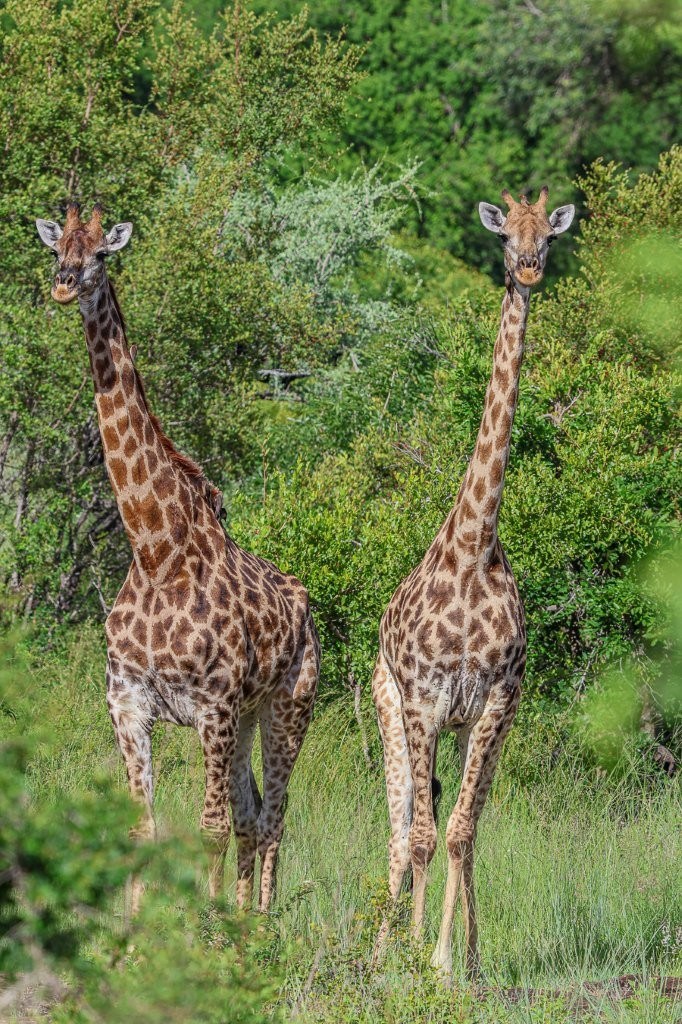
Until next time…
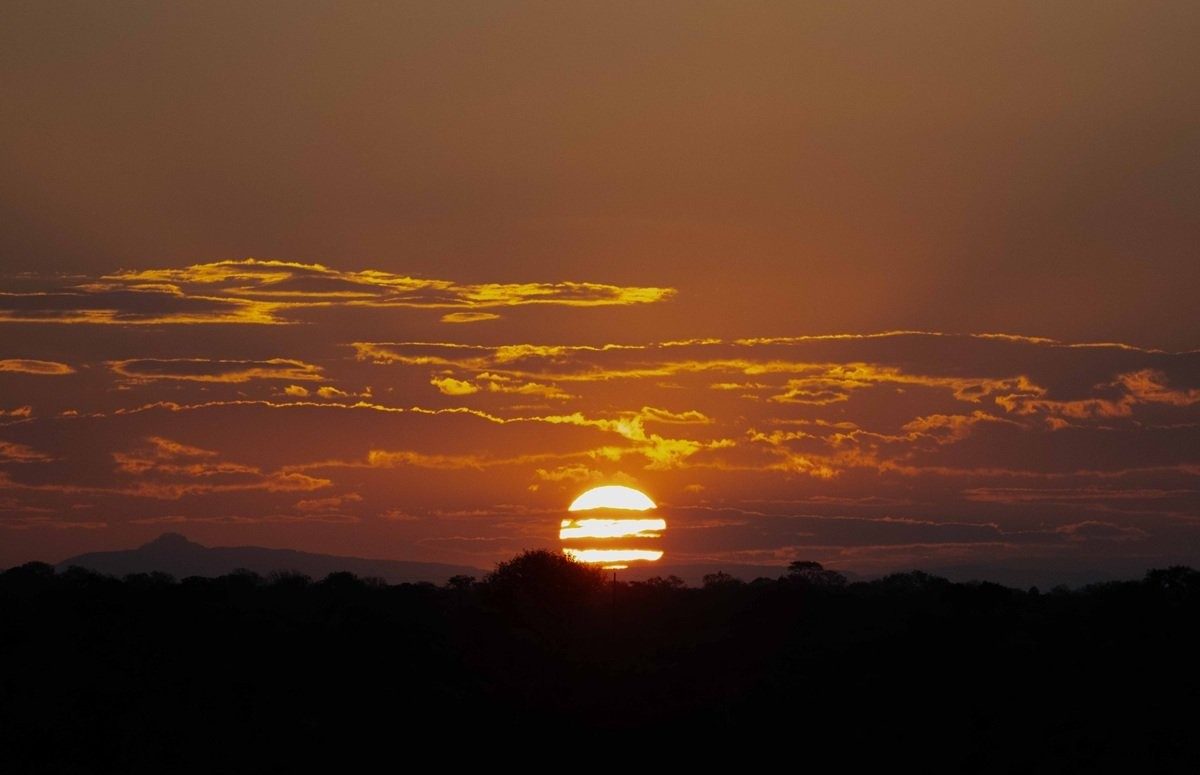
Blog by Wendy Claase
Images by Franco Hay, Jan Nel, JP van Rooyen, Ronald Mutero and Ruan Mey
Videos by Jan Nel







